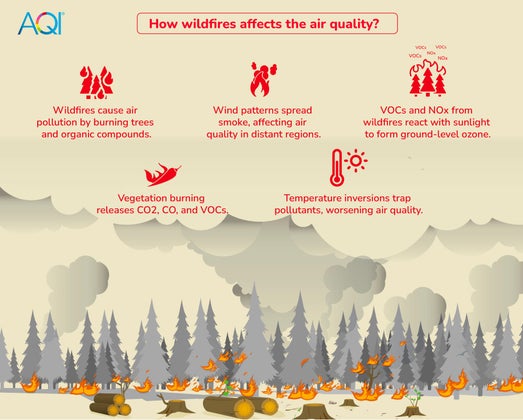Understanding the Major Pollutants and How They Affect The Environment
Large wildfires in the United States are becoming increasingly common, and smoke from these fires is a national concern. Wildfire smoke is full of particle pollutants, which are a mix of microscopic solid and liquid particles that are small enough to hang in the air and create the haze associated with smoke. Fires emit Particulate matter directly along with hundreds of gaseous compounds. The gaseous compounds include:
- nitrogen oxides,
- carbon monoxide,
- methane,
- volatile organic compounds
This chemical complexity makes wildfire smoke very different from typical industrial pollution and more dangerous at certain levels.

Wildfires release gases including:
-
Carbon monoxide (CO): which reduces oxygen delivery in the body.
-
Ozone (O₃): formed when wildfire gases react with sunlight, irritating lungs and triggering asthma.
-
Volatile organic compounds (VOCs): That can cause long term respiratory issues and worsen existing conditions.
Wildfires also produce Particulate Matter, tiny particles smaller than 2.5 micrometers. These particles can enter deep into the lungs and even the bloodstream. Smoke from wildfires can also travel hundreds or even thousands of miles, creating hazy skies and making it hard to see or breathe. Even areas far from the fire can experience hazardous air quality.
Promotional offer
Don't miss out on the chance to save while enjoying the quality and service you love. Keep an eye on this space for the latest updates and grab these amazing deals while they last!